The 7 Letter Alphabet: How to Name Music Notes
If you’re learning how to read sheet music, the first thing to know is the “musical alphabet.” Luckily for all of us, it’s only seven letters: A, B, C, D, E, F, and G.
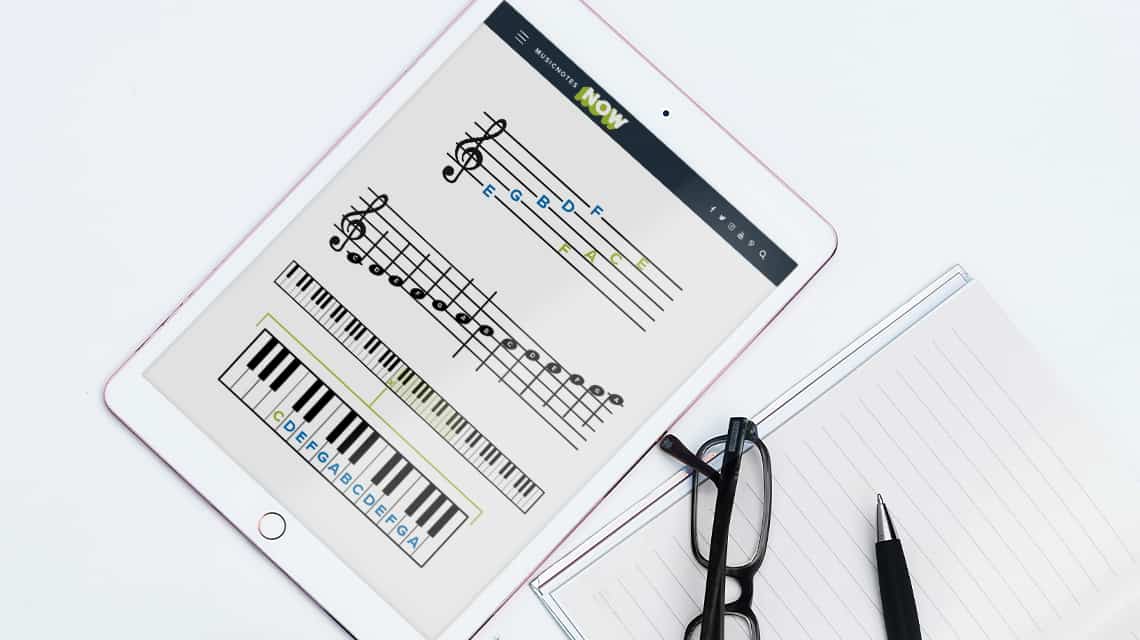
If you’re learning how to read sheet music, the first thing to know is the “musical alphabet.” Luckily for all of us, it’s only seven letters: A, B, C, D, E, F, and G. These letters are used to name the music notes you see on sheet music.
Sheet music uses what we call the staff to organize music notes. The staff consists of five lines and four spaces. Each of line and space represents a different letter (A-G), which in turn, represents a note.
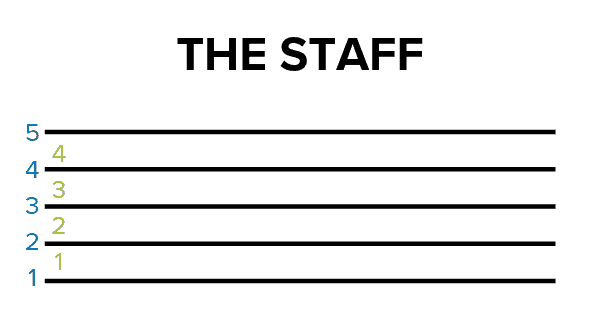
When it comes to actually assigning the note names A-G on the staff, the sequence will depend on the clef. However, it is worth noting that the sequence will always move alphabetically upward, regardless of the clef.
And speaking of clefs, a musical clef is a symbol that is placed at the left-hand end of a staff, indicating the pitch of the notes written on it. The clef tells a musician which lines or spaces represent each note. In this article, we’re going to cover the first clef nearly every musician learns, the treble clef.
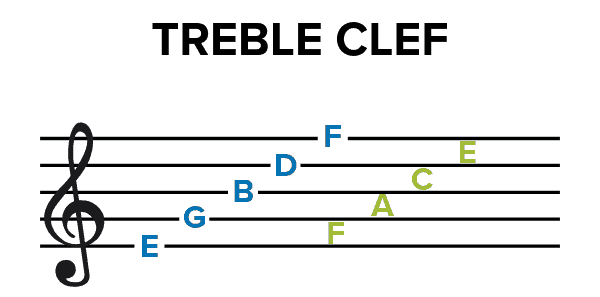
We use common mnemonics to remember the note names for the lines and spaces of the treble clef. For lines, we remember E-G-B-D-F by the word cue “Every Good Boy Does Fine.” Similarly, for the spaces, FACE is just like the word “face.” Now, let’s replace the letters with the music notes you will actually see in sheet music.

You’ve probably noticed by now that there is more than one “E” and more than one “F” on the image above. There are far more than seven musical notes, so the musical alphabet repeats itself over and over again. As such, some notes are found outside of the staff. We use small dashes called “ledger lines” to notate these pitches.
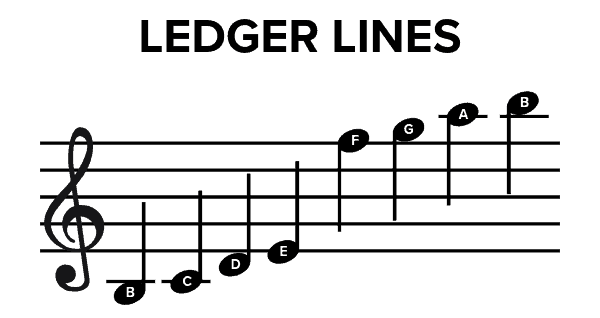
Notice how the letters continue alphabetically even after they’ve left the staff onto the ledger lines.
We’re now going to examine notes on the staff with notes on a piano keyboard. Our starting point is going to be “middle C.” Middle C on the staff is the first ledger line below it. We call it “middle C” because it represents the middle of the piano keyboard. If you’re looking for it on your keyboard, it’s likely the 4th “C” up from the lower end.
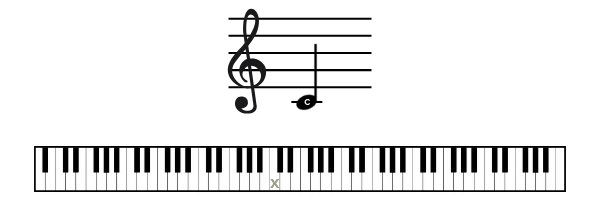
Now, let’s look at the notes we’ve learned on the treble clef, but on the piano keyboard this time!
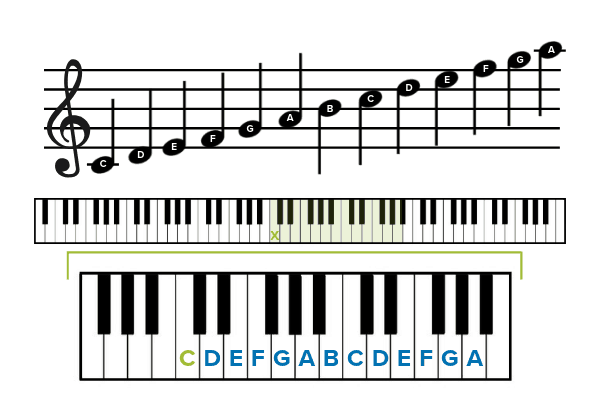
And there you have it! At first, memorizing the note names may seem a little overwhelming, but once you get familiar with your mnemonics to remember the lines and spaces, you’ll have it memorized in no time.
Once you feel comfortable with these notes, make sure to check out our guide, “How to Read Sheet Music: Step-by-Step Instructions.” Here, we will cover note values, time signature and rhythm, and even what the black keys are on the keyboard, because we know you’re curious! And as we stated earlier, there is more than one musical clef, so to learn the line and spaces of the bass, alto, and tenor clefs, check out “A Complete Guide to Musical Clefs: What Are They and How to Use Them.”
Are you still learning your note names but ready to play some sheet music? Check out Beginner Notes at Musicnotes.com. Beginner Notes are sheet music arrangements for beginning musicians, featuring large notes with the letter of the note name labeled on the note head. They are designed to make it easy for anyone to learn to play a song. Happy learning!

